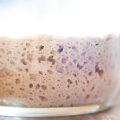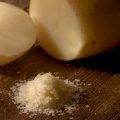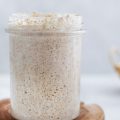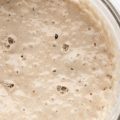There are a variety of ways to feed, maintain and use your sourdough starter. Your sourdough starter is like a pet – it needs regular feeding and care to thrive. An active starter is known to produce the perfect rise when baking sourdough bread. Once the sourdough starter rises, we ask the million-dollar question: when’s the perfect moment to put that bubbly beast to work in your bread?. As you know, sourdough starter must be fed regularly, whether its every few hours, or twice a day. To determine how soon after feeding your sourdough starter is the right time to use it, you’re going to need some guidance, so listen close!

Table of Contents
- Understanding Sourdough Starter Feeding
- When Should I Use a Starter for Sourdough Bread?
- Signs of an Active Sourdough Starter
- Understanding Temperature Impact
- How to Tell if My Starter is at its Peak?
- When to Use a Peaked Sourdough Starter?
- Why Use Sourdough Starter At Its Peak?
- Can I Use My Sourdough Starter Straight After Feeding?
- How Can I be Sure that My Starter is Ready to Use?
- Tips for Maintaining a Healthy Starter
- Sourdough Starter Readiness: Bottom Line
- FAQs
Understanding Sourdough Starter Feeding
Sourdough starter feeding is the process of adding fresh flour and water to maintain and cultivate the wild yeasts and bacteria in your starter. This regular maintenance is crucial for keeping your starter healthy and active for baking.
The feeding process typically involves:
- Removing a portion of the existing starter
- Adding equal parts flour and water to the remaining starter
- Mixing thoroughly to create a consistent mixture
This feeding ritual provides new food for the microorganisms in your starter, allowing them to continue fermenting and reproducing. As the starter ferments, it becomes more active, developing bubbles and increasing in volume.
Regular feeding serves several important purposes:
- Maintains the balance of yeast and bacteria in your starter
- Keeps the starter at a consistent acidity level
- Ensures your starter has enough strength to leaven bread
- Develops the complex flavors characteristic of sourdough
The frequency of feeding can vary depending on how often you bake and how you store your starter. Some bakers feed their starters daily, while others who bake less frequently might feed once a week or less, storing the starter in the refrigerator between feedings.
When Should I Use a Starter for Sourdough Bread?
The best time to use your sourdough starter is once it has peaked. This is normally achieved 3 to 4 hours after it has been fed.
Maintaining sourdough starter at cooler temperatures can mean that they may take longer to reach their peak. Once it has achieved a good rise, the starter will remain there for a couple hours, and then collapse.
Different flour and levels of bacteria, followed by room temp and many other factors affect the rate at which sourdough starter rises.
Unfortunately, we cannot guarantee a solid time to use your sourdough starter, you’ll have to make this decision upon close inspection.
Signs of an Active Sourdough Starter
The Bubble Test
A fully revved-up starter will be teeming with bubbles, from tiny ones that make it look almost frothy to larger bubbles pushing up to the surface. These bubbles are your sourdough’s way of saying “I’m awake and ready to party!”
The Rise and Fall
After feeding, keep an eye on your starter’s height. A lively one will typically double or even triple in size within a few hours. Once it hits its peak, it’ll start to fall back down – that’s your cue that it’s prime time for baking.
The Nose Knows
Trust your sniffer on this one, folks. A ready-to-rock starter should have a pleasantly tangy, almost fruity aroma. If it smells like nail polish remover or straight-up vinegar, it’s probably past its prime and needs another feeding. The perfect scent is hard to describe, but you’ll know it when you smell it – it’s like a bakery and a fruit stand had a baby.
The Float Test
Here’s a fun little trick: drop a small spoonful of your starter into a glass of water. If it floats like a duck, you’re in luck! A buoyant starter is full of gas bubbles, which means it’s active and ready to leaven your bread. If it sinks faster than the Titanic, give it a bit more time to perk up.

Understanding Temperature Impact
The activity of the yeast and bacteria in your starter is directly influenced by the surrounding temperature, which in turn affects how quickly it becomes ready for use after feeding.
In a warm environment, typically between 75-85°F (24-29°C), your starter will show increased activity. The fermentation rate accelerates significantly, with yeast and bacteria multiplying rapidly. This means your starter will be ready for use much sooner after feeding compared to cooler conditions.
Conversely, in cooler temperatures below 65°F (18°C), the fermentation process slows down considerably. Your starter might take much longer to reach peak readiness, sometimes requiring double or even triple the usual time.
To achieve consistent results, find the right temperature for your starter. Extremely high temperatures can lead to an overactive, potentially over-fermented starter, while very low temperatures can result in sluggish activity.
A useful technique is to use a proofing box or your oven with just the light on to maintain a steady, warm temperature. This can help expedite the process if you’re eager to start baking. However, it’s worth noting that slower fermentation at slightly cooler temperatures can sometimes contribute to more complex flavors in your final bread.
Pay attention to these temperature-related indicators:
- Faster bubble formation in warmer conditions
- A stronger, more acidic smell developing quicker at higher temperatures
- Slower rise and fall cycles in cooler environments
By observing these signs, you’ll develop a better understanding of how your specific starter responds to temperature changes. This knowledge will help you gauge when your starter is at its peak readiness for baking.
How to Tell if My Starter is at its Peak?
Make it a habit to check your starter every 60 minutes after feeding. An active sourdough starter will have a thick consistency, bubbling on the surface.
If you have a thinner starter, you might have smaller bubbles. These bubbles should be plentiful, and cover the surface of your starter. There are some theories stating that once a starter triples in size, it has reached its peak and is ready to use.
However not all starters reach this height, whilst others rise more.
If you’re wary in judging when your starter is the most active, you can conduct a simple test to help you.
- First find a tall container, preferably with a glass lid, and some markers or elastic bands
- Feed the starter as you would, adding some flour and water and getting rid of any discard. Mark where the top of your starter reaches in the container
- Place it in a warm place to rise, noting down the time
- Review after 2 hours, and keep marking the container
- Keep marking the rise of your sourdough starter every hour, until it starts to collapse. The highest point is the peak
By now you should know how long your starter takes to rise. Once you’re ready to make your bread, use the same recipe and keep the starter at the same temperature for accurate timings, which can work for home baking.
Related Read: Sourdough Baking Temperature Gude

When to Use a Peaked Sourdough Starter?
Once the starter has reached its peak, it will slow down the production of yeast cells, which makes it the perfect time to use your starter. However, as the starter remains at its peak, the lactic acid bacteria will continue to multiply. As a result, the number of organic acid bacteria will increase in your starter.
Leaving the starter at its peak for a couple of hours can be beneficial, as it activates the starter, increasing acetic acid, which provides flavor to the sourdough bread.
Why Use Sourdough Starter At Its Peak?
A sourdough starter at its peak can make the difference between a good loaf and an extraordinary one. But why is timing so crucial?
At its peak, your starter is teeming with active yeast and bacteria. These microorganisms are primed to produce the gases that give your bread its rise. Use your starter at the right moment for optimal lift and texture.
Peak activity also means peak flavor production. The balanced acids created at this stage contribute to that complex, tangy sourdough taste we all crave. A starter at its peak behaves more consistently, leading to more reliable outcomes from batch to batch. This predictability is key when you’re perfecting a recipe.
Using peaked starter contributes to better gluten development, resulting in bread with that perfect chewy texture and beautiful open crumb structure. It can also save you time – an optimally active starter ferments dough more efficiently, potentially reducing bulk fermentation and proofing times.
Can I Use My Sourdough Starter Straight After Feeding?
While you can use a mature starter immediately after feeding, it’s not always the best idea.
When you feed your starter, you weaken the bacteria, and as it chomps through the flour the bacteria and yeasts multiply, making it a strong starter as gas production begins to create bubbles, allowing the starter to rise till it reaches its peak.
How Can I be Sure that My Starter is Ready to Use?
The main factor to look out for is the starters appearance.
An unfed starter won’t produce bubbles or increase in size. There is an additional test that you can do to ensure that your starter is ready top use, and this is called a float test.
The float test is a way of checking whether your sourdough starter is light and airy enough to make your bread rise and create that perfect loaf.
- Start by filling a glass of water at room temperature
- Give your starter a gentle mix to evenly distribute the bubbles
- Take a teaspoon of sourdough starter and place it carefully onto the water surface
- If the sourdough starter floats, then your starter has peaked enough to make bread
- If the starter sinks, then it doesn’t have enough bubbles, meaning that it hasn’t reached its peak yet.
Tips for Maintaining a Healthy Starter
Consistent Feeding Schedule
Maintaining a regular feeding schedule is crucial for a healthy sourdough starter. Stick to feeding daily for room temperature starters or weekly for refrigerated ones. This consistency helps maintain a balanced microbial ecosystem, ensuring your starter stays active and ready for use.
Pro tip: Set a reminder on your phone to help you remember feeding times.
Temperature Matters
The ideal temperature range for your starter is between 70°F and 85°F (21°C to 29°C). In colder temperatures, it becomes less active; in warmer conditions, it might become overactive or attract unwanted bacteria. If your kitchen’s temperature is inconsistent, consider using a proofing box or finding a warm, stable spot in your kitchen.
The Right Hydration Level
Finding the appropriate hydration level is essential. A starter that’s too dry might have difficulty fermenting, while one that’s too wet can promote unwanted microbial growth. Aim for a consistency similar to thick pancake batter. With practice, you’ll develop a sense for the ideal hydration.
Flour Selection
While a 50/50 mix of whole wheat and all-purpose flour is a reliable staple, don’t hesitate to experiment with different flours. Rye flour can increase starter activity, while ancient grains like spelt can add complexity to its flavor profile. Introduce new flours gradually to allow your starter time to adapt to the change.
Storage Methods
For less frequent bakers, refrigeration is an effective storage method. Storing your starter in the refrigerator slows down fermentation, reducing the frequency of required feedings. Remember to bring it back to room temperature and feed it a few times before using it for baking. For very infrequent use, you can even dry your starter for long-term storage, preserving it for extended periods.

Sourdough Starter Readiness: Bottom Line
A ready sourdough starter can be a very rewarding accomplishment, but it does require some time and effort.
As long as you learn the patterns of your starter before hastening its use, then you’ll achieve the best results in your baking.
FAQs
Can I use my starter right after I feed it?
Sourdough starter takes time to eat through the sugar and starches in the flour, which may prevent it from becoming active. This is why it is recommended to wait between 4 to 12 hours before using the starter to bake sourdough bread.
How long does sourdough starter need to sit after feeding?
You can give your sourdough starter frequent feedings, feeding it at regular intervals, whether it is after 8 hours or 12 hours, then allowing it to sit in an air tight container, under cooler temperatures, until it is time to be fed again.
Do you feed sourdough starter right before you use it?
You should wait at least 2 to 4 hours, or until the starter has reached its peak before using it in baking.
How long before I can use my sourdough starter?
Before making sourdough bread, you need to wait 4 to 12 hours after feeding before using the starter in your sourdough recipe.

![Sourdough Starter Temperature [Beginner'S Guide] 9 Sourdough starter temperature [a beginner’s guide]](https://www.mydailysourdoughbread.com/wp-content/uploads/2023/01/blog-images-48-120x120.jpg)




